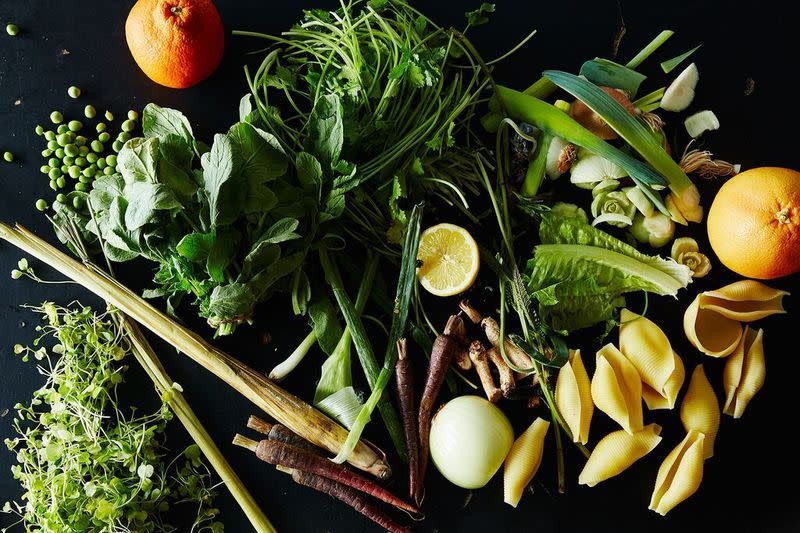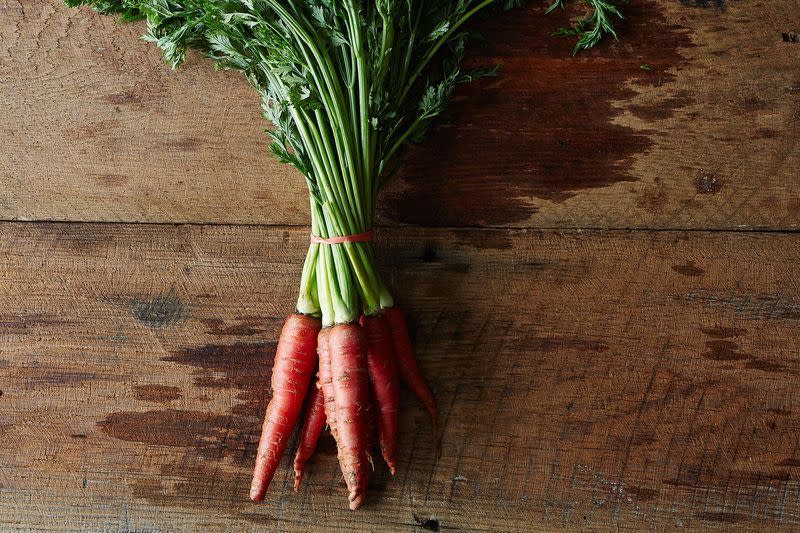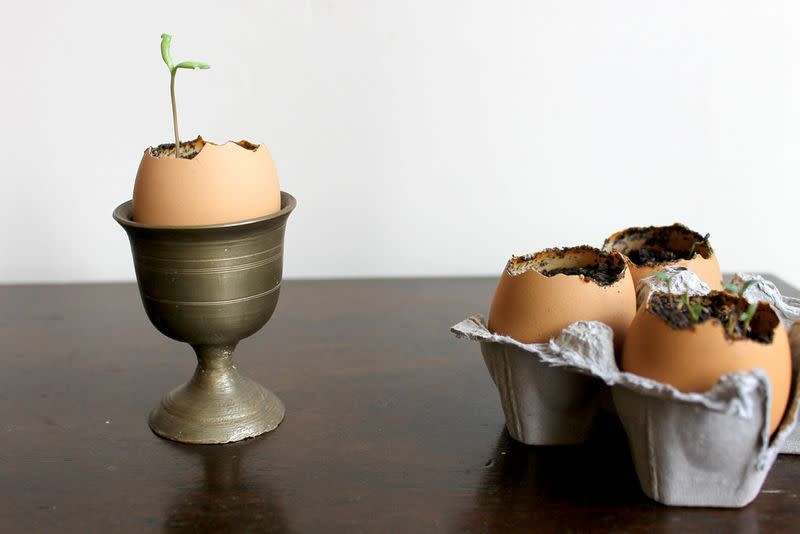7 Tips for Cutting Down on Food Waste From a Pro

Kitchen scraps. (Photo: James Ransom)
Tom Colicchio may be better known as Padma Lakshmi’s smooth-headed counterpart on Top Chef or as a James Beard Award-winning chef, restauranteur, and author. Now he has a new title under his belt: protector of produce.
We spoke with him about food waste, a topic near and dear to him. After a demo on roasting carrots (and tossing the chopped leaves into a wheatberry salad), he gave us a few great ideas for how to cut down on food waste at home.
Related: Over 30 Recipes to Reduce Kitchen Waste
Plan ahead. Words of wisdom. “Planning is a luxury,” he admits. However, it’s a step that can save money, time, and potentially wasted food. By plotting out a weekly menu, you can better budget grocery runs, don’t have to rack your brain for what to make day-to-day, and buy only what you need. If you’re trying to figure out meals for your weekly menu, we have a few ideas.
Buy less more often. Many people buy wholesale or from super centers thinking they may be saving themselves money as well as several trips to the market. However, buying produce in bulk is far from a guarantee of freshness. The best thing for your wallet (and the planet)? Buy what you need when you need it. A quick stop to your local grocer every few days for fresh produce will prove beneficial to your palate and the earth.
Can it! An avid home gardener and canner, Colicchio believes that a great way to resource conservation is food preservation. Using carrot roots for cake and leaves for a salad, but unsure of what to do with the stems? He says “pickle ‘em!”
Related: 5 Ways to Use up Your Vegetable Scraps

Carrots. (Photo: Bobbi Lin)
Get creative. Colicchio says it’s not about following recipes, but about experimenting with what you have! He’s a big fan of repourposing leftover food or ingredients that can roll over from one meal to the next.
Teach them. He believes that the key for food scraps to be used as regular ingredients is to teach others (especially kids!) that food scraps are, well, food!
Get to know your fridge/freezer. He suggests looking at your refrigerator’s instruction manual to get a better sense of where certain foods should be stored, depending on humidity and temperature. Cooked more peas than you’d please? Bag and freeze them! Just like store-bought frozen vegetables, thaw them out for a future meal.
Compost. Tossing food in the trash contributes to such a high volume of greenhouse gases that, according to Colicchio, “If food were a country, it would be the sixth largest producer of methane.” Don’t compost yet? Start now!
Related: 4 Kitchen Scraps to Use in the Garden—Even if You Don’t Compost

Planting in eggshells. (Photo: Anna Hezel)
More on Food52:
Our Guide to Freezer-Friendly Foods
5 Tips for Conquering Kitchen Waste
How to Estimate the Right Amount of Food For Your Party (& 3 Menu Ideas)
By Gabi Benedit.

